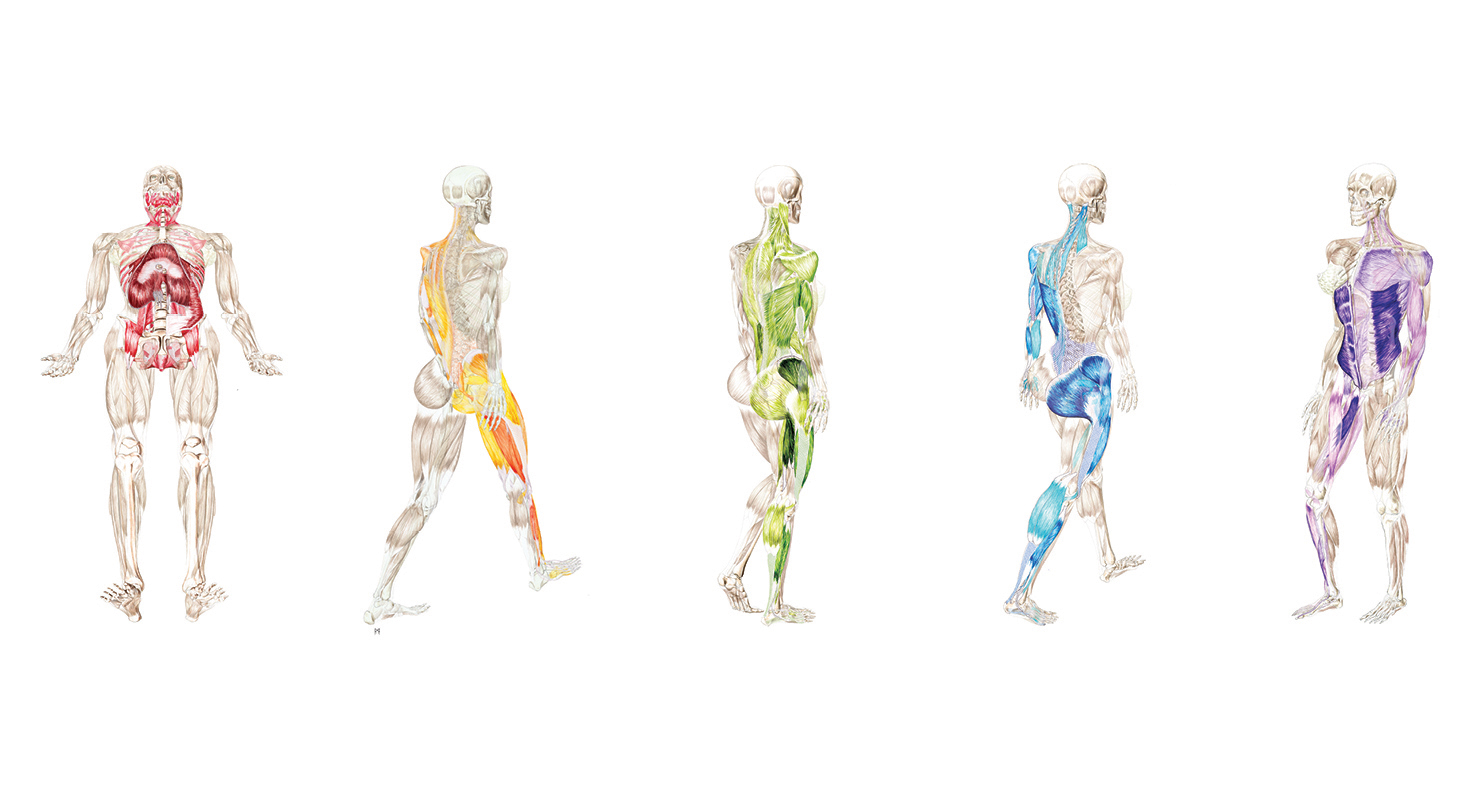
The Master Template



The charts in the Five Primary Kinetic Chains Anatomy Poster Series outline a primary physiological principle in movement: bones, joints, ligaments, tendons, muscles and fascia do not work in isolation. They work synergistically to create movement.
When movement is balanced and efficient, the players are all cooperating with each other. If movement is out of balance and inefficient, the result is compensation in the structure. This maladaptive compensation follows some specific physiological principles.
The first of these principles, synergistic dominance, is when one synergistic component of the structure is compensating for another synergistic component. More specifically, one component is overworked or up-regulated in relationship with another synergist that is underworked or down-regulated.
Synergistic dominance can show up over a spectrum of compensatory strategies. It can show up locally or globally. A local example would be the relationship of a muscle to itself. The distal end of a muscle can be up-regulated for a down-regulated proximal end of the same muscle. Synergist dominance will also show up when multiple muscles are working together. For example, hip flexion has several muscles that work synergistically. The iliacus, psoas, tensor fasciae latea, rectus femoris, adductor longus, and sartorious are the major contributors to hip flexion. If one of these muscles is up-regulated, that can functionally down-regulate the others.
Synergistic dominance also shows up globally. Kinetic chains, the manner in which the musculoskeletal system organizes itself, is not merely a local occurrence. Kinetic chains organize across the entire fascial fabric. The lateral kinetic chain provides a good example of global synergistic dominance. Throughout the dynamic platform of the stance phase of the gait, the ankle, pelvis, torso, and neck all need to play well together. If they are unable to do so, then one player will take over doing the job of the player unable to engage. Single leg stance is a great global assessment protocol to discern synergistic dominance of the lateral kinetic chain.
Synergistic dominance can also show up in kinetic chains that work in unison. For example, during the gait cycle, the posterior spiral kinetic chain is paired with the opposite deep longitudinal kinetic chain. Likewise, the lateral kinetic chain is paired with the opposite anterior spiral kinetic chain. These pairings of kinetic chains have an interdependent relationship. One relies on the other in the efficiency of storing and releasing elastic energy. If one chain has a dysfunctional component, it is going to have an effect on the other, they are in a synergistic relationship.
The other side of the synergist coin is the functional opposite. Muscles that work in opposition to one another rely on a principal called reciprocal inhibition. Reciprocal inhibition defines that the agonist, contracts or shortens, as the opposite, the antagonist, must lengthen. Simply, if one muscle is shortening then the other must be lengthening. If the muscle that should be lengthening is unable to do so, the effect is that the muscle that needs to shorten becomes down-regulated. It is unable to overcome the up-regulated muscle, as it can’t compete.
Functional opposites happen across kinetic chains just as synergists do. The foundation of understanding synergistic dominance builds the prerequisite for investigating functional opposites. As movement evolves, essentially there are two things happening: some tissues are shortening while others are lengthening.
The charts included in The 5 Primary Kinetic Chains posters provide a map for synergistic relationships. By mapping the synergists, one can then decode functional opposites. This is a very useful learning tool as well as a visual reference for your clients and patients.